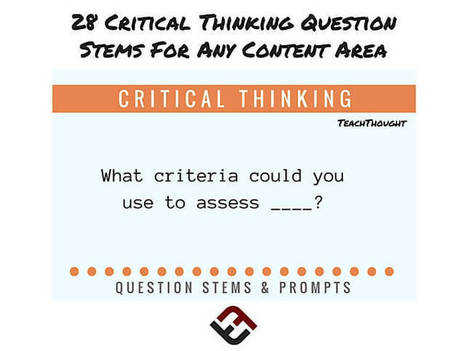The Essential Fluencies are a solid foundation for effective modern learning. They cover all the bases of the skills students need for success beyond school. Developing these Fluencies in our students is a critical thinking journey in itself. That’s why you’ll find good questions at the heart of Essential Fluencies development.
Every stage of every Fluency asks us to think deeply and critically, and their embedded skills and abilities are about stretching thought and imagination. By asking good exploratory questions, students learn the essence of each Fluency and its phases. That’s what the following lists are meant to give you and your students.
Research and publish the best content.
Get Started for FREE
Sign up with Facebook Sign up with X
I don't have a Facebook or a X account
Already have an account: Login
Literacy in a digital education world and peripheral issues.
Curated by
Elizabeth E Charles
 Your new post is loading... Your new post is loading...
 Your new post is loading... Your new post is loading...
|
|










![Use These 5 Steps to Learn How to Ask Good Questions [Infographic] | Information and digital literacy in education via the digital path | Scoop.it](https://img.scoop.it/9Ig5e-RUbd2Bd5JiwjpP7Tl72eJkfbmt4t8yenImKBVvK0kTmF0xjctABnaLJIm9)





